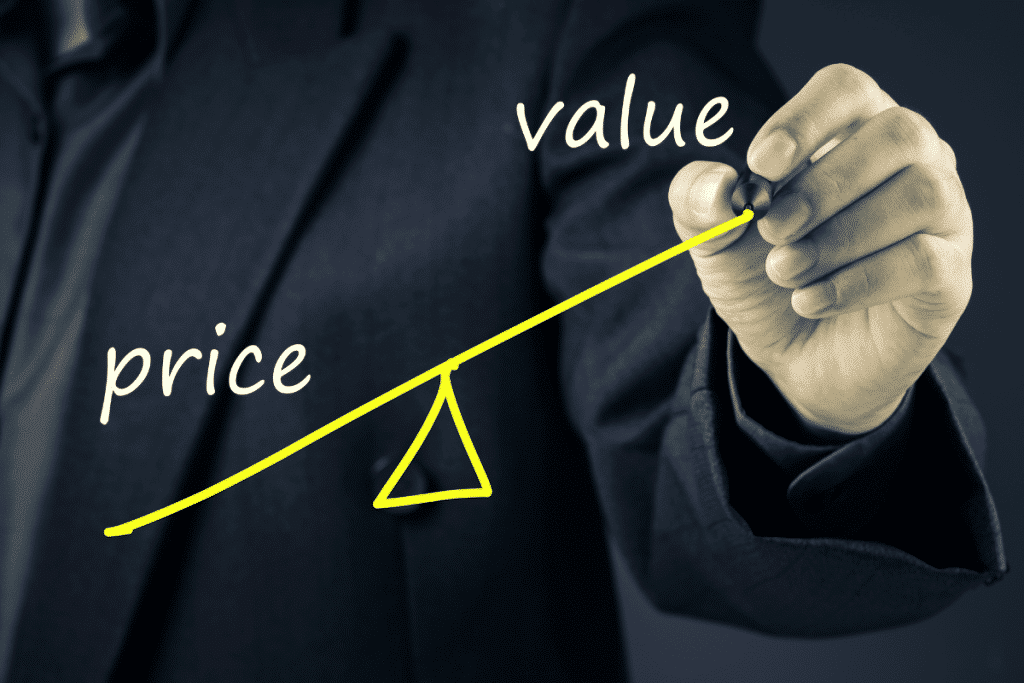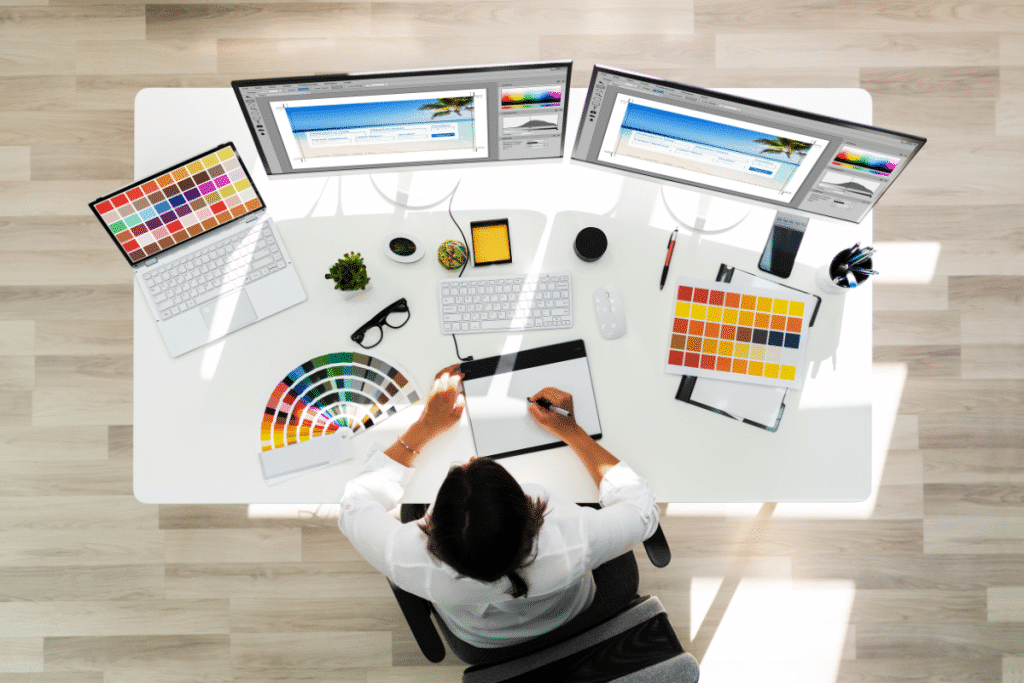Logo design is a critical piece of your business’s identity. It serves as a visual representation of your brand’s values and offerings and is often the first thing that potential customers notice about your business. But how much should a quality logo design cost? It’s a common question, and the answer isn’t always clear-cut.
There isn’t a one-size-fits-all approach when it comes to logo design prices, and the cost can vary substantially depending on various factors. Let’s break down the landscape of logo design price structures to ensure you’re not paying more than you should.
Pricing Models In Logo Design
Understanding logo design pricing can be a baffling affair, particularly when faced with a panoply of pricing models. Broadly, there are four models you’ll likely encounter – hourly rates, fixed prices, package rates, and retainers. Remember that the logo design price often reflects the design process, brand identity understanding, and professional design expertise of the logo designer or design agency involved.
1. Hourly Rates
Many designers charge an hourly rate for their services. This price is usually dictated by the designer’s experience, reputation, and demand. An experienced logo designer who produces high-quality work can charge anywhere from $100 to $300 per hour.
- Pros: The total cost of designing a logo with this model is substantial but may offer more flexibility regarding time and revisions.
- Cons: Costs can escalate quickly if the design process takes longer than expected. This pricing model lacks a definite end price, which can lead to budget uncertainties.
Here, the price range depends on how long the logo design project lasts. Due to their skills and expertise, more experienced graphic designers command higher hourly rates than their less experienced counterparts.
While this model offers transparency (you pay for exactly how long the design process takes), it can be unpredictable since the total hours to create the perfect logo can be hard to estimate upfront.
2. Fixed Pricing
This model simply involves a one-time fixed price for a specific design service, e.g., logo design. Prices can vary greatly – from as low as $50 for a basic design from a novice designer to several thousand dollars for an elaborate design from an established professional.
- Pros: It’s straightforward – you know what you’re getting upfront and exactly what you’ll pay.
- Cons: It could be more costly if you need extra revisions or adjustments not included in the initial pricing.
With a fixed price model, you pay a set cost for the entire logo design project, irrespective of the time or number of revisions. This can be favorable if you have a definite idea in mind, requiring less exploration and time from the designer. However, extensive revisions or project scope changes may incur additional charges.

3. Package Rates
Some designers offer specific design packages based on what you require. For example, a basic package might include initial concepts, revisions, and final designs in various formats. More premium packages can incorporate brand mockups, stationery designs, and style guides.
These packages can range from $500 for a simple logo design clear up to $5000 for comprehensive branding services.
- Pros: You know what you’re getting upfront. It’s simpler to budget for as you’re aware of the total cost from the start.
- Cons: You may end up paying for more services than you initially needed, making it less cost-effective if you only require a simple logo.
Some logo designers and design agencies offer package rates combining logo design with other services like designing business cards, a brand style guide, and more. While this could be more costly upfront, it can provide more value over time if you need these additional services. It also ensures consistency across your brand’s visual elements.
4. Value-Based Pricing
In this model, the price depends on the perceived value the logo will bring to your business. Say, if a business sees a good logo as an investment that will yield significant returns, it might be ready to pay a higher price for it.
- Pros: This model respects the designer’s creativity and expertise.
- Cons: It’s harder to gauge the preliminary cost as it depends on the subjective perceived value of the logo.
This model promises priority service and ongoing support and is more typical with larger companies needing frequent design services.
5. Contest or Crowdsourcing
Another pricing model comes from logo design contests and crowdsourcing platforms, where multiple designers compete to create the winning design. Businesses can start a contest by setting a budget generally ranging from $100 to $1000, depending on the platform and the contest’s complexity.
You have access to diverse concepts from a multitude of designers without committing to just one. Also, you only pay for the design you love. However, some designers participating in these contests might be amateurs, resulting in lower-quality work. Designers might work less thoroughly due to the uncertainty of payment.

6. Retainer Model
Some businesses opt for a retainer agreement wherein they secure the services of a designer over a period, paying a guaranteed sum per month for a predetermined amount of work.
- Pros: Regular access to a designer you trust. It’s easier to budget for as you know the costs of the design work in advance.
- Cons: You’re committed to a definite period contract, which may not make sense if your needs can vary.
This model may be suitable for businesses requiring a sizable amount of ongoing design work. Pricing is often negotiable and based on the volume and complexity of the work.
Determining A Fair Logo Design Price
Finding a balance in logo design pricing – between cost-effective and quality services – is key to ensuring you extract value from your logo investment. You might ask, “How much should a logo cost?” or “How much does a logo design affect my brand?” The truth is, there’s a big difference between simply getting a logo and acquiring an effective, professional logo design that personifies your brand.
The skills of a professional logo designer might run higher in costs, but such experts can create a unique logo design tailored to your vision and business objectives. The type of logo you choose, the colors, typography, and other aesthetics can largely impact the design process length and price.
Your initial concept may not hit the mark. So, factor in the cost of revisions when setting a budget. Your logo will be displayed in multiple places – website, business cards, billboards, etc. Remember that the design needs to be versatile and work well in different contexts.
A great logo has longevity. A professional logo design might cost more initially but can save you from recurring redesign expenditures.
The cardinal rule is that the price you’re willing to pay should align with your expectations and the value the logo brings to your branding. A professional logo enhances your brand’s perception, helping your company stand out among competitors.
Factors That Affect Logo Design Pricing
The logo is an essential element of the brand’s identity, and its design requires dedicated attention and adequate resources. Often, questions arise like “How much does a logo cost?” or “How much does a logo design affect the cost?”
Factors impacting logo design pricing:
- Designer’s Experience: The more experienced and reputable the designer or design agency, the higher the logo design cost. It’s akin to hiring a top professional in any field.
- The originality of Design: A unique logo design requires an innovative approach and might take longer to create, increasing the cost.
- Time Allotted for the Project: If you need your logo urgently, expect to pay a premium for a quick turnaround.
- Number of Revisions: More rounds of revisions mean more time spent by the designer on your project, which naturally affects the price.

Over time, your company’s logo will be displayed across a wide range of platforms and formats, from business cards to billboards – this makes the investment worthwhile for a high-quality logo. However, remember there’s a big difference between expensive and valuable – a higher price doesn’t always mean better quality.
Choose for your logo design mindful of the balance between quality and affordability. Remember, your logo is one of the first impressions customers get of your brand. A well-designed, professional logo can not only help your brand stand out but also build customer trust.
Investing wisely in your logo design now will benefit your brand in the long run, reinforcing your brand’s identity through an effective logo. Don’t rush the decision – getting your logo right the first time is crucial!


